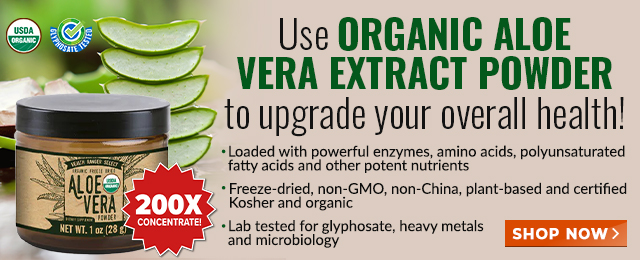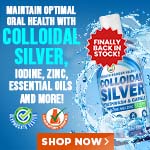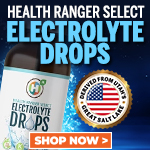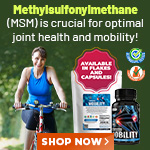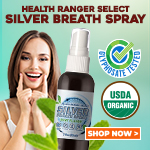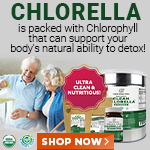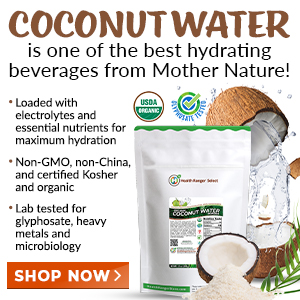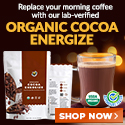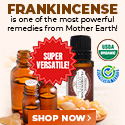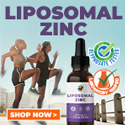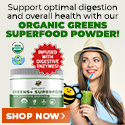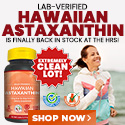
Food Label Literacy - Identifying Products With Excellent Nutrition
Friday, November 07, 2008 by: Nathan Schilaty, D.C.
Tags: food labels, health news, Natural News
- Newly released JFK files reveal Pentagon's role in creating Lyme disease and covid in the same lab
- Oncologist warns of ‘terrifyingly aggressive’ cancers in children, linked to immune suppression from COVID vaccines
- Trump administration CUTS FUNDING to Gavi, the Vaccine Alliance - a major blow to the Bill Gates-backed entity
- Health Ranger Report: Ashton Forbes discusses TELEPORTATION ORBS and their role in MH370 disappearance
- Musk targets “strangely wealthy” lawmakers in DOGE probe, names Pelosi, McConnell, Schumer
- NIH study, buried for decades, reveals that Flu Shots INCREASE elderly deaths, not prevent them
- EPA banned chemical linked to cancer, Parkinson's and fatal heart defects in babies - now industry is lobbying to get it reinstated
- Woman contracts WORLD'S DEADLIEST VIRUS after unknowingly being given the WRONG VACCINE
- At least 75 percent of Americans are unknowingly MEDICATED FOR STUPIDITY by fluoridated water – Utah now banning it
- Millionaire fitness coach charged in Tesla vandalism incident as anti-Musk attacks escalate
- “Ethically sourced” human “bodyoids” could usher in a new era of medical exploitation, raising disturbing ethical questions
- Civil war is here – Multiple events, from conservatives being “swatted,” to attacks against Telsa owners, happening across America as Dem politicians are telling supporters to ‘fight in the streets”
- COVID-19 scandal linked to CANCER SURGE: Billionaire researcher sounds alarm
- U.K. unveils controversial pandemic preparedness tool: A double-edged sword?
- Tackling the rubber waste crisis: Groundbreaking study reveals eco-friendly method to recycle tires
- Homesteading Boom: How families are escaping cities to grow their own food
- DARPA: The shadowy innovator behind the world’s most advanced military technologies
- Rubio: State Department has REVOKED over 300 visas of foreign students
- Newly released JFK files reveal Pentagon's role in creating Lyme disease and covid in the same lab
- Analysis: The coming economic collapse, a mass uprising and Trump's three secret weapons to halt the growing revolt
- Trump's greatest betrayal so far: Accelerating Middle East wars, silencing dissent, and serving Zionist masters
- CDC finally halts $11 billion COVID funding scam as health officials admit the ‘pandemic’ was a fraud
- The hidden dangers in your kitchen: How cooking methods impact diabetes, cancer and aging
- Kiss Your Genetic Privacy Good-Bye! 23andMe Gets Green Light to Sell Your Intimate Genetic Details to Anyone They Want
- DEADLY DECEPTION: How COVID vaccines increased mortality rates and why authorities hid the truth
- Dr. Suzanne Humphries makes bombshell appearance on Joe Rogan podcast, exposing vaccine industry deception back to POLIOMYELITIS
- Trump nominates VACCINE ZEALOT Susan Monarez to lead the CDC, sidelining RFK Jr.'s reform efforts
- Here are TEN all-natural ways to protect your garden without using harmful chemicals
- Woman contracts WORLD'S DEADLIEST VIRUS after unknowingly being given the WRONG VACCINE
- Senate Democrats deny censorship industrial complex existed, defend government's role in silencing dissent
- Black cumin seed oil emerges as a powerful ally against breast cancer and chronic inflammation
- Sugar-free deception: Artificial sweeteners hijack hunger signals, fuel obesity epidemic, study warns
- “Independent” anti-Russia outlet MEDUZA faces COLLAPSE as US funding dries up
- The Health Ranger releases “Vaccine Zombie” song and music video, using AI-animated zombies for the music video
- Discovery of vast underground city beneath Giza pyramids challenges human history
- Key nodes of Federal Government censorship
- Newly released JFK files reveal Pentagon's role in creating Lyme disease and covid in the same lab
- California's social media censorship law struck down: A victory for free speech or a threat to online safety?
- EPA advisor admits the agency is funneling billions to climate groups ahead of Trump’s return to White House
- The Health Ranger releases “Vaccine Zombie” song and music video, using AI-animated zombies for the music video
- Dr. Mike Yeadon releases 15-minute testimony - WATCH - about genocidal intent of COVID “vaccines”
- Florida takes a stand: DeSantis proposes permanent ban on mRNA vaccine mandates
- “Why we influenced the 2020 elections”: Facebook files reveal the coordinated effort to bury the Hunter Biden laptop story
- Mike Adams releases country western hit single: Goin’ Back in Time is Comin’ Home
- The pandemic as a tool for INDOCTRINATION: Understanding “The Indoctrinated Brain” by Dr. Michael Nehls
- Unpacking the Lies That We’ve Been Fed – new song and music video released by Mike Adams, the Health Ranger
- Mike Adams releases music poetry sensation: A Child of God
- House Intelligence Committee calls for the ARREST and PROSECUTION of Dr. Anthony Fauci
- Rep. Nancy Mace introduces bill to ban biological males from female facilities on federal property
- Michigan sheriff announces criminal investigation into 2020 election crimes, Dominion Voting Systems
- Peter Rost exposes Big Pharma corruption in his book “The Whistleblower: Confessions of a Healthcare Hitman”
- Migrants are taking advantage of recent hurricanes to scam residents and loot their homes
- Sugarcane extract superior to cholesterol-lowering drugs?
- Survival 101: Effective EMF blocking techniques
- Red Cross issues warning to stop blood plasma donations from vaccinated people
- Scientists confirm: GENIUS brain function can be spontaneously unleashed in humans without any apparent cause
- EPA advisor admits the agency is funneling billions to climate groups ahead of Trump’s return to White House
- HYSSOP: What research reveals about the health benefits of this ancient holy herb
- Two containers with completed ballots fall out of truck in Florida
- Fully vaccinated about to see “tsunami” of illness and death, warns virologist
- Global leaders unite to clamp down on “misinformation” with UN-backed Cascais Declaration
- BREAKING: 2025 NDAA authorizes mandatory military draft of WOMEN across America… as Pentagon pursues global NUCLEAR war with both Russia and China at the same time
- Michael Yon warns of a ZIONIST TAKEOVER in Trump’s second administration
- BOMBSHELL: DNA testing kits are a SCAM to develop ethnic-specific bioweapons
- Ozempic and Wegovy weight loss drugs are injectable LIZARD VENOM PEPTIDES that may unleash a devastating wave of organ failure… side effects align with symptoms of SNAKE BITES
- Israeli soldiers accused of even more torture and abuse in the West Bank
- These 13 countries just signed an agreement to engineer a global FAMINE by destroying food supply
- NASA admits that climate change occurs because of changes in Earth’s solar orbit, and NOT because of SUVs and fossil fuels
- RFK Jr. clears key hurdle: Sen. Susan Collins backs controversial HHS nominee, signaling a new era for health policy
- Sermon 30: How Jesus reveals Caesar’s FAKE CURRENCY and FALSE AUTHORITY
- Coriander seeds: Ancient medicine backed by modern science
- Arizona officials claim Maricopa County needs 10-13 days to tabulate results of the election
The Nutrition Facts are based off of a 2000 calorie diet, a standard of the needed calories for the energy requirements of an average person. A calorie is a quantity of energy that is derived from either a gram of fat, protein, or carbohydrate. One gram of fat will produce 9 calories, while one gram of a protein or a carbohydrate will yield only 4 calories. Many people are so involved in counting calories that they forget to recognize the most important factor of nutritional content. One could consume 2000 calories and easily not receive any nutritional content; the body, hungry for nutrients, will require more food -- the individual will oblige and consume more food. This type of eating has been termed "eating empty calories." The result of eating "empty calories" is an overfed and undernourished individual. Most Americans eat enough calories, but are still malnourished! Thus, it is important to know how to read food labels to ensure one receives adequate nutrition. The earth makes nutrients that are vital to our health; no wonder why Hippocrates, the "Father of Medicine" stated, "Let thy food be thy medicine and thy medicine be thy food."
To properly read food labels, begin with the serving size. If the serving size is extremely small, chances are the manufacturer of the product wants the calorie, carbohydrate, total fat, and protein content to appear reasonable. In order to accomplish this tactic, food manufacturers can legally make the serving size unreasonably small.
Eat organically! Even though organic foods are more expensive, you can rest assured that there has been no pesticide or fungicide use, no artificial hormones, and no harmful chemical fertilizers. In addition, organically grown foods emphasize the use of renewable resources and the conservation of soil and water. Not only are organically grown foods better for you, but they are also better for the earth.
Third, study the list of ingredients; the best nutritional information about a food product is in this section. Follow these guidelines to ensure better nutrition and health:
* Look for ingredients that have recognizable names -- chemicals are long, difficult words and are added to foods for flavor enhancement or to serve as a preservative. These chemicals create long-term toxic effects on the body and on one's health. A good rule to live by: if you would not like to spell or pronounce the word, chances are you should not be putting it in your body (think about the names of pharmaceuticals).
* Ensure the presence of whole grains. Consider the following -- whole grains are capable of producing more grain when planted in the ground. Flour and processed grains lack vital components of a whole grain and are not capable of growing anything if placed in the ground. Therefore, only whole grains are capable of producing valuable nutrition and health. Another fact to consider –- if flour and water are used to make paper-maché, what do flour and water make inside of you?
* Avoid artificial colors and flavors. Would you eat an apple artificially produced in a laboratory? If not, then why would you want to consume an artificial flavor or color made in a laboratory? Artificial colors have a USDA certified tag FD&C -- Food, Drug, and Cosmetic. These colors are approved for use in foods, drugs, and cosmetics. Not only can the same colors in your food be used in cosmetics, but many of these artificial colors have been linked to cancer.
* Avoid trans fats -- they are poor for your health and do not occur naturally in nature. Trans fats are used in food products solely for the benefit of the manufacturer because it increases food "shelf-life". Amounts of trans fats in food content are permitted to be rounded down. For example, a product can have 0.49 grams of trans fat and still be labeled as containing no trans fats! To avoid trans fats, do not consume any food that has "partially hydrogenated" oil listed in the ingredients.
* A "fully hydrogenated" fat is a manufactured saturated fat. These should also be avoided as they do not occur in nature and the fat has been altered from its original form. The body will not know how to properly process this fat.
* Observe the sodium content. Once again, sodium is added to benefit the manufacturer. Sodium comes from salt and is a natural preservative –- using salt on meat (such as beef jerky) preserves meat since the high quantity of salt prevents bacterial growth. Foods high in sodium are poor for your nutrition and good for shelf-life. Foods that are grown naturally are high in potassium; search for foods that have a low sodium and high potassium content. Sodium and potassium are needed to maintain blood volume and blood pressure; rampant high blood pressure rates stem from lack of exercise and high sodium intake from processed and unnatural foods.
* Avoid all artificial sweeteners and high fructose corn syrup. Artificial sweeteners are chemically manufactured and are a toxic overload to the body. Accumulations of this chemical overload will lead to future health conditions. Aspartame, the ingredient of artificial sweeteners, accounts for about 70% of all complaints filed to the FDA! High fructose corn syrup is an ingredient that is inexpensive and very sweet. It is added to foods to enhance sweetness and to help the food manufacturer do so inexpensively. Unfortunately, fructose (a natural sugar from fruit) does not need a carrier to enter into a cell. Foods flavored with high fructose corn syrup result in an abnormal "sugar spike" in the consumer's blood and a rapid accumulation of fat as the body converts the sugar to fat for storage.
* Be aware of flavor enhancers. They come in many names and forms and are neurotoxic. All of these flavor enhancers are derived from glutamate, a powerful neurotransmitter used in the brain. The body utilizes L-glutamic acid which occurs naturally or "bound" in a variety of foods, but processing renders it in the "free" form. This "free" form resembles sugar and is neurotoxic. The common names for flavor enhancers are: monosodium glutamate (MSG), hydrolyzed vegetable protein, hydrolyzed protein, hydrolyzed oat flour, sodium caseinate, calcium caseinate, yeast extract, autolyzed yeast, textured protein, plant protein extract, corn oil, and natural flavors.
The practice of reading food labels can be a daunting experience at first, but with practice it will become easier and your health will thank you for it. Also, be sure to follow the Honest Food Guide to ensure proper nutrition.
About the author
Nathan Schilaty, D.C. is an Applied Kinesiologist and president of Centra Chiropractic, Inc. He specializes in treating chronic conditions through natural healing methods of cold laser, homeopathy, nutrition, chiropractic adjustments, cranial-sacral therapy, acupressure, and more!Food labels at FETCH.news
Get independent news alerts on natural cures, food lab tests, cannabis medicine, science, robotics, drones, privacy and more.
Take Action: Support Natural News by linking to this article from your website
Permalink to this article:
Embed article link: (copy HTML code below):
Reprinting this article:
Non-commercial use OK, cite NaturalNews.com with clickable link.
Follow Natural News on Facebook, Twitter, Google Plus, and Pinterest
Science News & Studies
Medicine News and Information
Food News & Studies
Health News & Studies
Herbs News & Information
Pollution News & Studies
Cancer News & Studies
Climate News & Studies
Survival News & Information
Gear News & Information
News covering technology, stocks, hackers, and more



"Big Tech and mainstream media are constantly trying to silence the independent voices that dare to bring you the truth about toxic food ingredients, dangerous medications and the failed, fraudulent science of the profit-driven medical establishment.
Email is one of the best ways to make sure you stay informed, without the censorship of the tech giants (Google, Apple, Facebook, Twitter, YouTube, etc.). Stay informed and you'll even likely learn information that may help save your own life."
–The Health Ranger, Mike Adams











